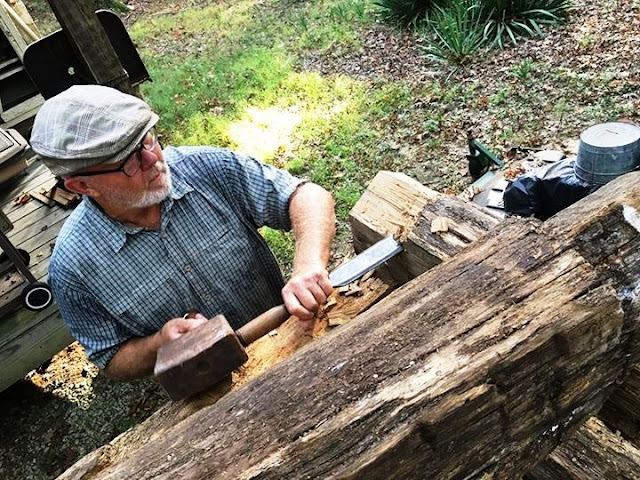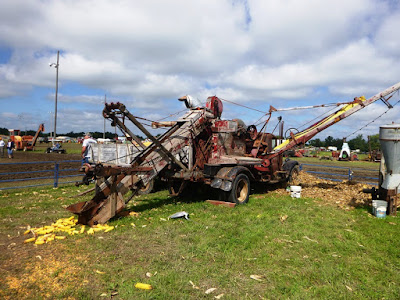There was nothing on the island. The last permanent human inhabitants were said to have been driven away by a plague of rats early in the last century. Though I never saw any rats, there were lots of birds – but no houses, no shops, no electricity, no television. When I was a baby, soon after my father bought the island, my family would be dropped off like castaways by a local boatman, who would pick us up again two weeks later. There was no way of contacting the outside world: no phone connection, no radio contact. I recently asked my father, 'What would have happened if somebody broke a leg or came down with acute food poisoning or something?’ He answered, vaguely but triumphantly, 'Well nobody did break a leg, did they?’ My father is not the worrying type.
We cooked on an open fire and camped, sleeping in an inch of water with rain dripping down from the roof of the tent. I remember staggering out into the rain, through ferns that reached up to my four-year-old neck, clutching a soggy roll of loo paper, looking for a nice secluded rock to go behind.

It took eight years for three men – off and on, when the weather allowed – to rebuild one of the small crofter’s cottages on the island, laboriously ferrying out materials, equipment and furniture. Then my father got a boat, so we could fish for enough food to feed the family for the whole summer. From then on, every year, my parents, my sister Emily, one year younger, and my brother Caspar, six years younger – and I – spent the whole spring and summer on the island. The house was lit by candles, and there was still no phone or television. In the evenings my father told us tales of the Vikings who invaded this part of Scotland 1,200 years before, of the quarrelsome tribes who fought and tricked each other, and of the legendary dragons that were supposed to live in the caves in the cliffs. There was a hillside behind our little stone house that looked exactly like the back of a sleeping dragon. On stormy nights, when the wind howled like a fury across the Hebridean wilderness, I would scare myself silly imagining it was that dragon shaking off its stony incarnation to come and kill us all.
For London children, the freedom was intoxicating. We climbed cliffs, explored caves and played in the little ruined houses where Vikings would have lived 1,000 years earlier. We went out on our own in a rubber dinghy and nobody seemed even remotely worried. There was an old bell hanging outside the front door that my mother would ring when it was time for lunch. Otherwise we were not bothered by adult intervention.
Our lives revolved around food: catching it, cooking it, eating it. My father took us out in the boat in storms when the waves were so high and breaking over the deck so hard that we had to bail the water out as we went. When it rained (this was Scotland, after all), we played cards, painted and made up games and stories. We wrote plays and acted them out. We read vast quantities of books. In fact we were out there so long that I ran out of children’s books and started reading the adults’. By the time I was 13 I had read Albert Speer’s Inside the Third Reich – a fascinating inside account of Nazi Germany, but not normal reading for a 12-year-old – three times, as well as half of Dickens.
Here’s the thing, you see: nowadays we spend the whole time desperately trying to entertain our children and trying to prevent boredom at all costs, but perhaps boredom is good for children. Being bored is certainly excellent for inducing creativity.
One aimless sunny day when he was six, Caspar tried to work out how to catch edible crabs in the harbour. We could see the crabs from the rubber dinghy as we drifted above them, not a life-jacket between us, but the water was too deep for us to dive down and catch them. So Caspar devised a method whereby he would jump into the water holding a large, heavy stone, thus sinking quickly to the harbour floor, drop the stone, grab the crab and rise to the surface with his prey. Ingenious. Crazy, but ingenious. We watched on as he doggedly carried out this plan with increasingly large stones, the whole endeavour charged with the interesting possibility of one’s little brother drowning himself in the pursuit of scientific experiment (and food).

My family still owns the island, and I take my own children back there now. Maisie, Clemmie and Xanny are 15, 12 and nine, and they love the island. It has magical properties for all children. They do suffer withdrawal symptoms, because it is one of those rare places left on God’s green earth that still has no mobile-phone connection and no hope of Facebook, let alone television or Mumford & Sons (or any music at all). But once they are over that they play card games and acting games, watch otters and catch fish, paint and explore caves, and get bored – just like we did. They refuse to eat eel or winkles, of course, or even crab, and nobody has read Inside the Third Reich, which still sits on one of the shelves, all damp and mildewy at the edges. You have to be there for a whole summer to get hungry and bored enough to do that.
But none the less they experience a little of the danger and the boredom – and the beauty and the spirit – of living in the wilderness in the way that our fathers and forefathers did for countless generations. And I reckon that is good for them. After all, as my father would say, nobody has broken a leg, have they? So far…

















































